The former DC chief takes you on a Bat-history tour…

Back in March, we convened a blue-ribbon panel of experts to pick the 13 greatest Batman stories ever – in any medium – and ran each selection daily as THE TOP 13 BATMAN COUNTDOWN, in celebration of the Caped Crusader’s 80th anniversary. (Click here. You’ll dig it.)
Included on the panel was former DC chief and Batman editor Paul Levitz, who Sept. 12 will be appearing at Manhattan’s Society of Illustrators for a 90-minute discussion on the Darknight Detective with longtime colleague and acclaimed Bat-scribe Denny O’Neil. (Click here for tickets and further details.)
With that event in the offing, it seemed like a good idea to revisit Levitz’s TOP 13 ballot. So, I asked him if he’d care to elaborate on his selections, and he graciously agreed, providing the guest column below.
Meanwhile, it’s worth noting that the Society’s magnificent Batman exhibits – featuring rare, original art stretching from the Golden Age to today — are still running. Click here to check out our INSIDE LOOK. — Dan
—
By PAUL LEVITZ
1. The Dark Knight Returns, by Frank Miller, Klaus Janson and Lynn Varley, 1986. The comic that smashed the glass ceiling – this was the one that made the general public aware that comics could be smart and challenging fare for adults, that Batman wasn’t simply the goofy guy Adam West had played, and established the format for the American graphic novel.
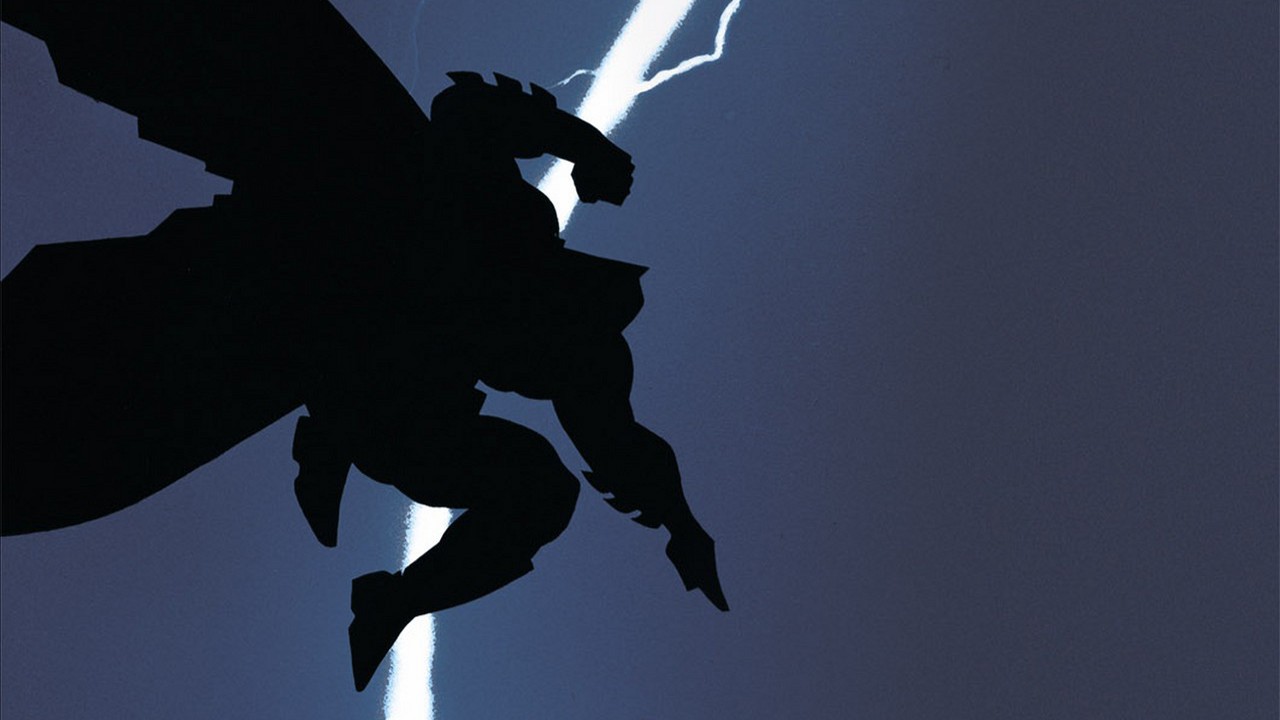
—
And, in chronological order (including publication date):
The Case of the Chemical Syndicate, by Bill Finger and Bob Kane, Detective Comics #27, 1939. As we’ve learned, it’s largely borrowed from a Shadow story, and contains just traces of what Batman would become, but it’s still the start of the magic.

—
Robin, the Boy Wonder, by Bill Finger, Bob Kane and Jerry Robinson, Detective Comics #38, 1940. There’s a lot about Robin that I dislike as an adult (no sane person should ever endanger a child like that, seriously!) but none of it occurred to me when I was a kid, and I think that cheerful oblivious appreciation was shared by millions.
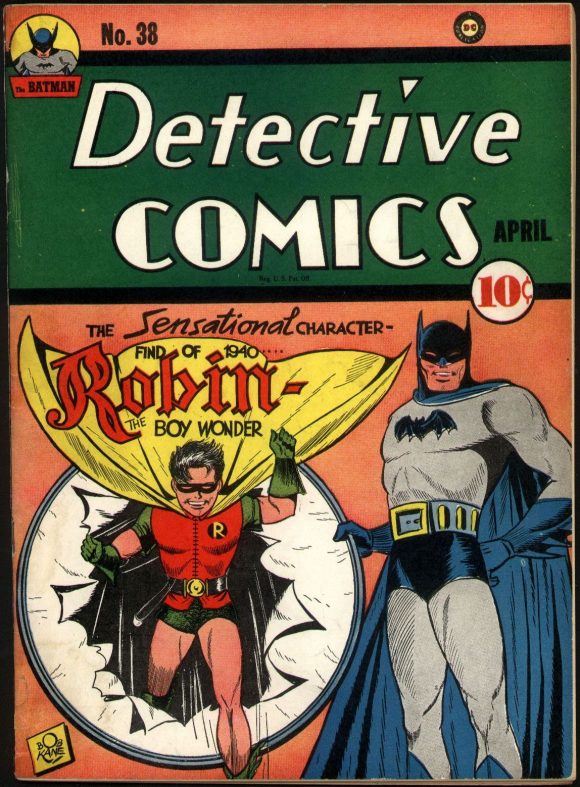
Bob Kane pencils, Jerry Robinson inks
—
The Joker, by Bill Finger, Bob Kane and Jerry Robinson, Batman #1, 1940. The Joker emerges from the pulp tradition and early film, but somehow transcends them and becomes comics’ most enduring and effective villain.
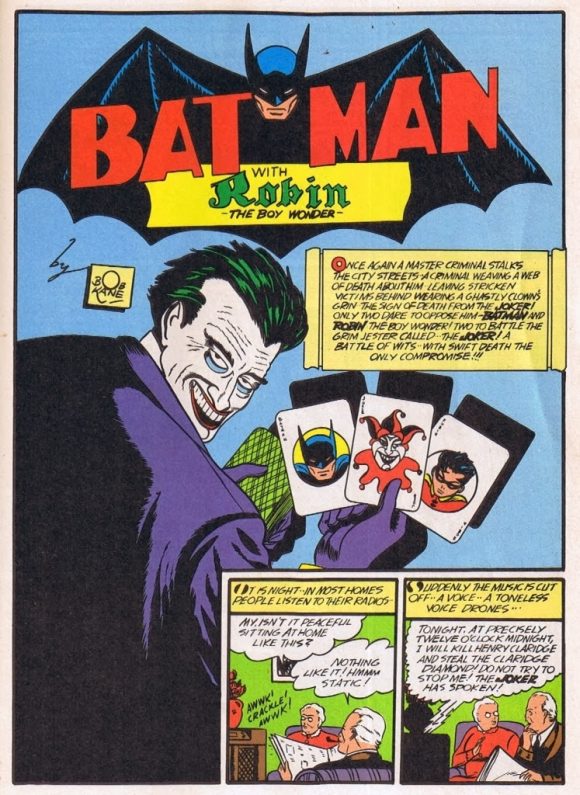
—
Here Comes Alfred!, by Don Cameron, Bob Kane and Jerry Robinson, Batman #16, 1943. P.G. Wodehouse has slipped out of the American reading diet since these days, and butlers have ceased to be common literary foils, but Alfred endures in his more mature renditions — the perfect multi-talented aide to a super hero. The first stories giving him a deep background were during my editorial watch, as we tried to show how he became infinitely resourceful, without ever dreaming he could star in a TV series on his own.
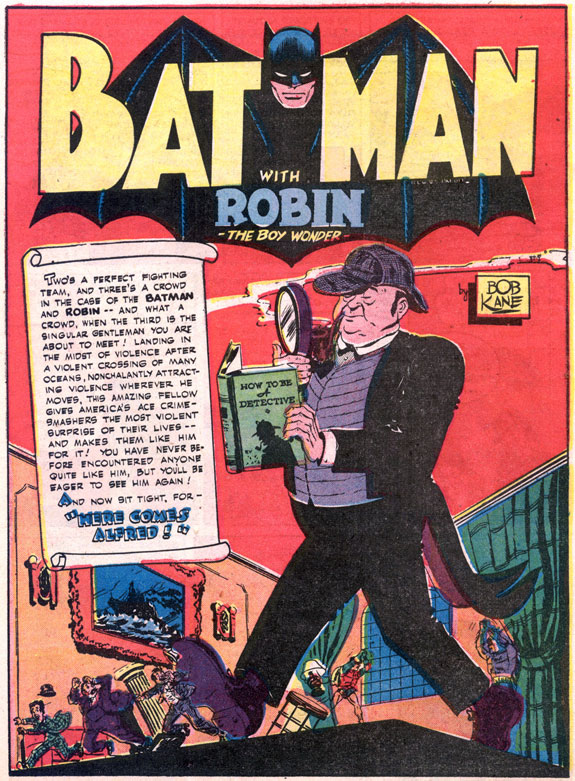
—
The Mystery of the Menacing Mask!, by John Broome, Carmine Infantino and Joe Giella, Detective Comics #327, 1964. One of the most important “inflection points” in Batman’s career – the birth of the “New Look.” Not an incredible tale, but an incredible moment as everything began to become modern.
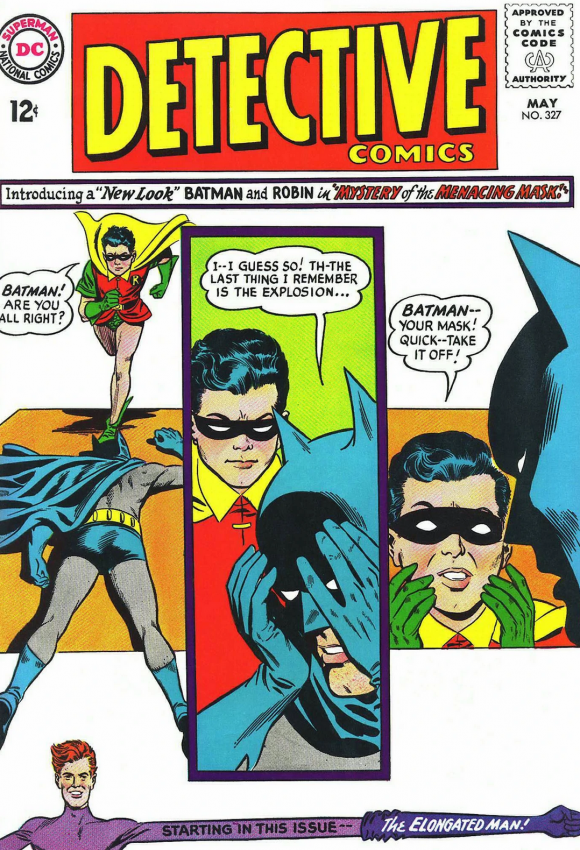
Carmine Infantino pencils, Joe Giella inks
—
Hi Diddle Diddle/Stuck in the Middle, the debut episode of the Batman TV show, written by Lorenzo Semple Jr. and directed by Robert Butler, 1966. The moment that millions began to love Batman. This changed everything: It began the possibility of comics as source material for massive cultural hits; connected comics to the center of popular culture just as Marvel was offering a new, more complex flavor of material (anyone realize that the Galactus saga was on sale at that very moment?); and created the economic value that transformed DC into the first corporate media-owned comics company in America.
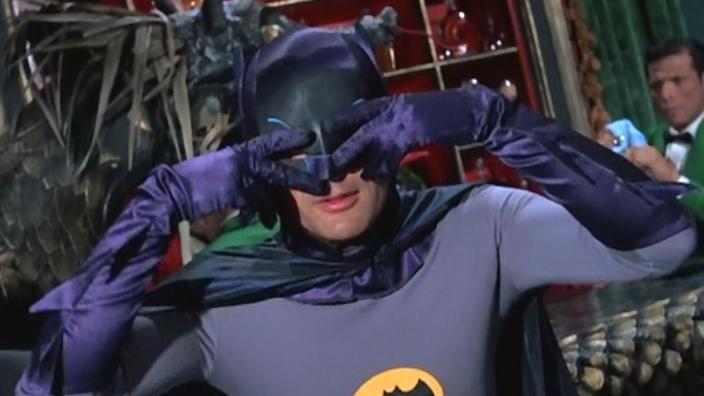
Adam West
—
The Secret of the Waiting Graves, by Denny O’Neil and Neal Adams, Detective Comics #395, 1970. Another of the key inflection points. Brought together at the height of their creative powers, Denny and Neal would redefine the range of what a Batman story could be.
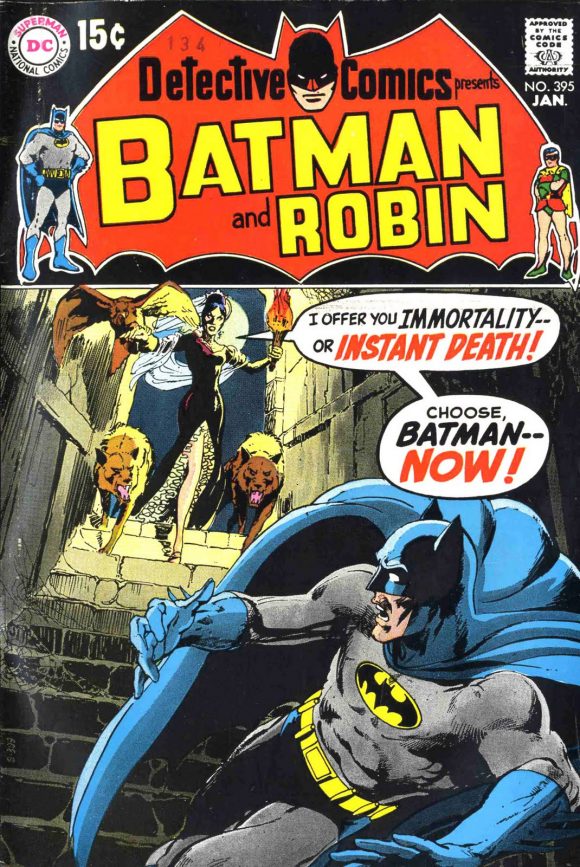
Neal Adams
—
There Is No Hope in Crime Alley!, by Denny O’Neil and Dick Giordano, Detective Comics #457, 1976. Possibly the first Batman tale to really pull on the heart strings. The potential was always there in the Wayne murder, but this was the first great exploration of it.
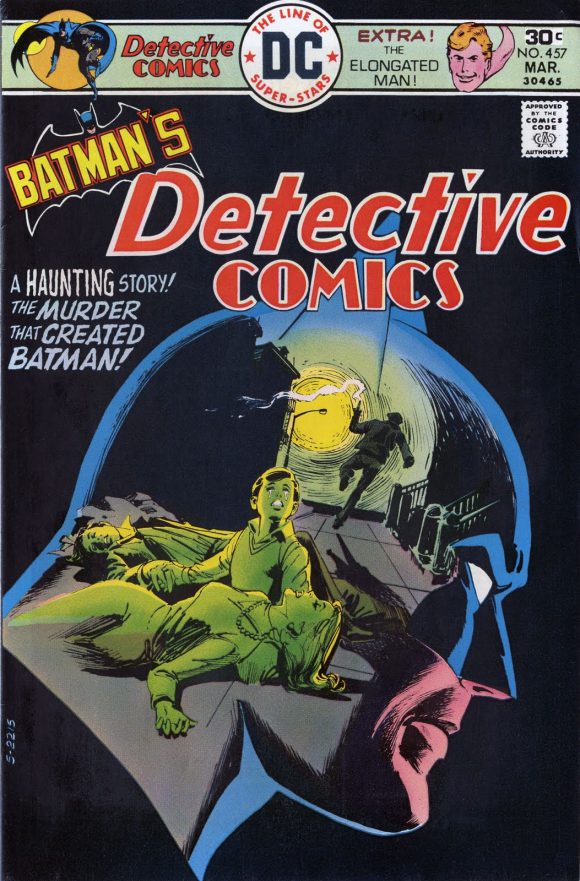
Dick Giordano
—
Batman: Year One, by Frank Miller and David Mazzucchelli, Batman #404-407, 1987. Frank wanted to reinvigorate the ongoing periodical side, after having done so much to pull readers’ attention to the “event” programming. As much as I’m proud of The Untold Legend of the Batman a decade before, this is the bible that would define the Bat for comics and every other medium that followed.
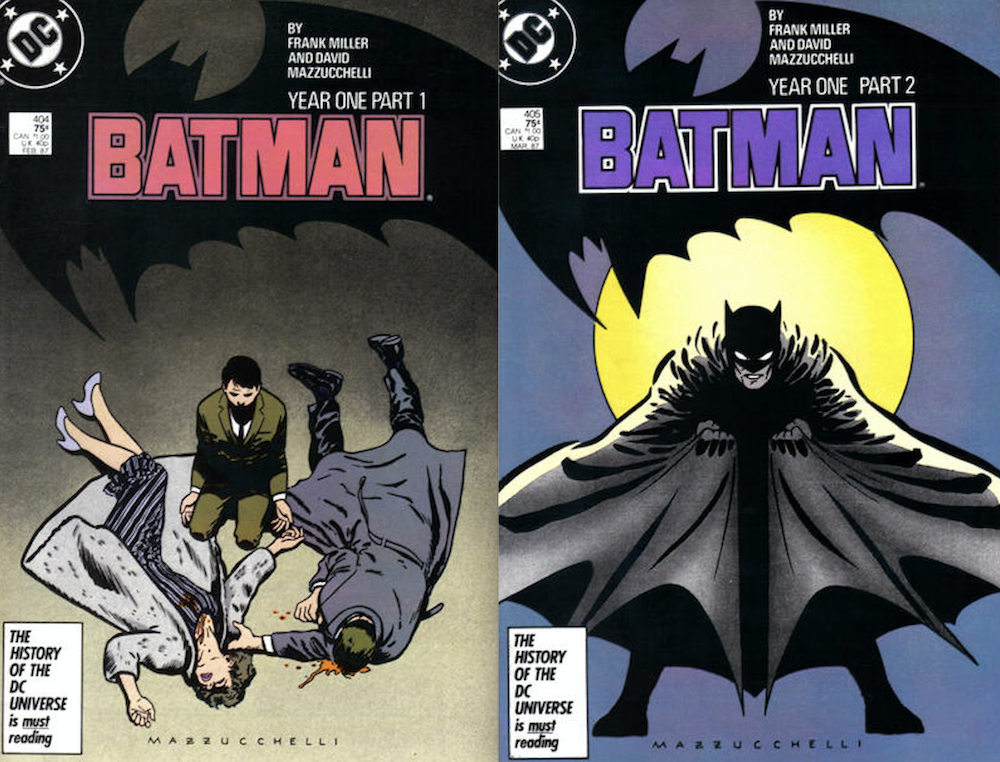
—
Batman, directed by Tim Burton, 1989. The second time Batman became the center of American popular culture — unique in pulling off that repeat. The bat symbol was everywhere, and on everyone, and would never be put back in its place again. Strong performances, gloriously fantastic visuals, and the ultimate redemption of Batman as a melodramatic hero.
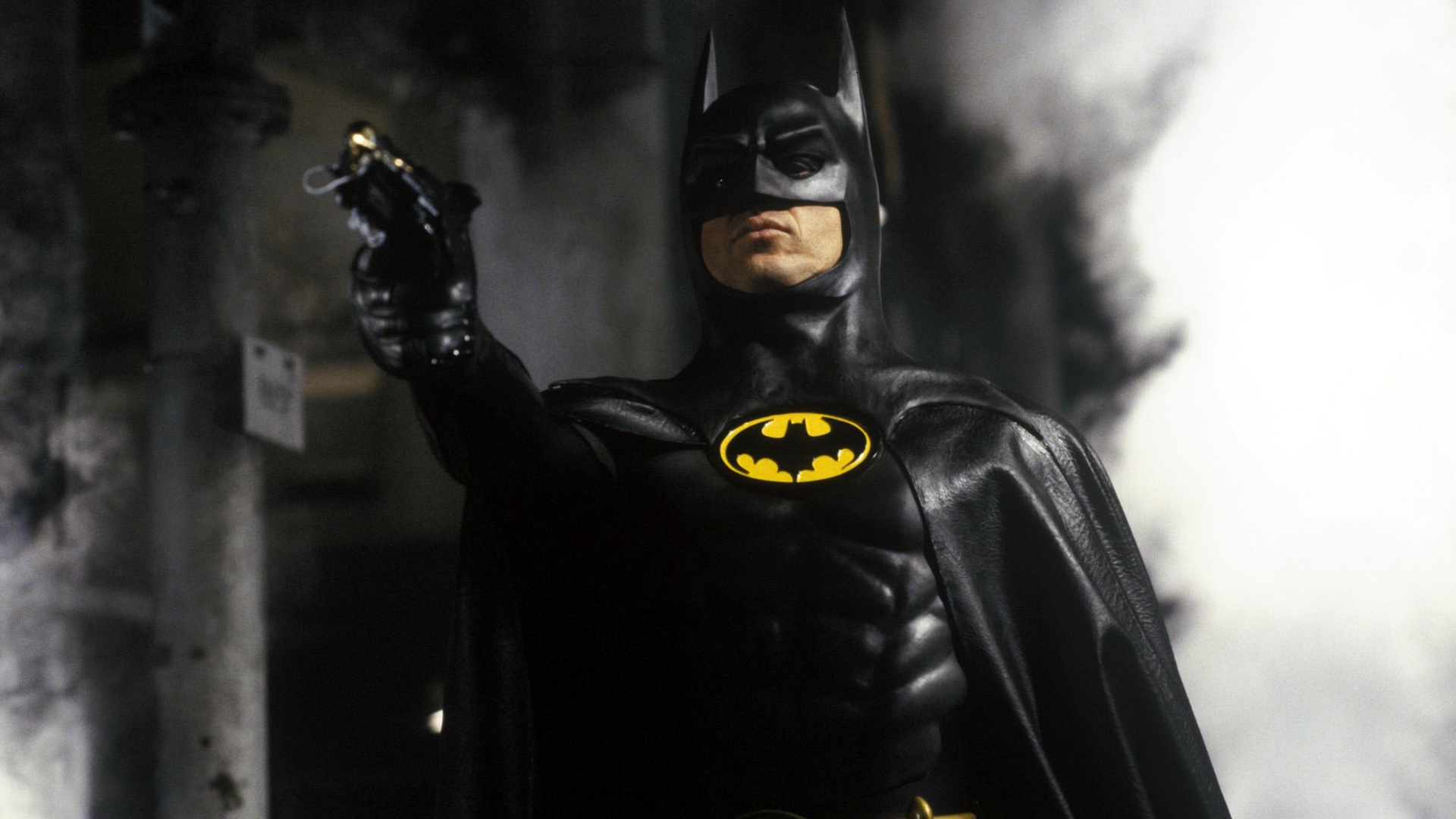
Michael Keaton
—
On Leather Wings, the first produced episode of Batman: The Animated Series, written by Mitch Brian and directed by Kevin Altieri, 1992. Watching the test footage (can it really be almost three decades ago?) with the team and seeing how they were smashing the limitations of television animation — what a moment to be a part of. Stylistic decisions made here defined the DC heroes to a giant audience for the next two generations.

—
The Dark Knight, directed by Christopher Nolan, 2008. It’s impossible to score a three-peat in American culture, but Batman becomes the only property to ever do so. The price Heath Ledger paid for his astounding performance was too high, but it demanded the country’s attention, and created Batman’s most chilling moments.
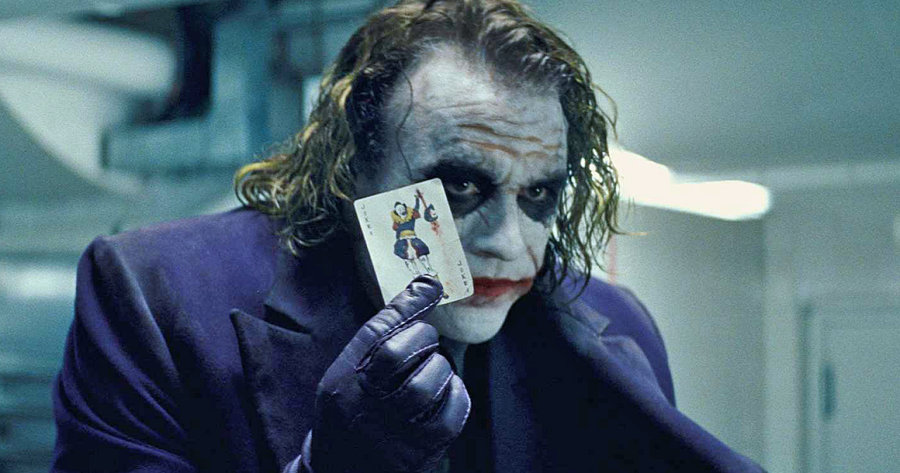
Ledger
—
Paul Levitz and Denny O’Neil are appearing at 6:30 p.m., Thursday, Sept. 12, at the Society of Illustrators, 128 East 63rd St., New York, NY. Click here for more info.
—
MORE
— THE TOP 13 BATMAN COUNTDOWN. Click here.
— THE ULTIMATE BATMAN READING AND VIEWING GUIDE. Click here.
— How PAUL LEVITZ Reined in BATMAN During the Bronze Age. Click here.

September 5, 2019
What a nice selection from Mr. Levitz.
September 5, 2019
I’ve just re-read some of those stories in a variety of different books like the Deluxe Edition of Detective Comics, 80 Years of Batman and other compilations of older stories in other books.
BTW Dan Greenfield. Wasn’t Alfred’s name in that Batman # 16 Alfred BEAGLE, before it was changed to Pennyworth and he got skinny?
September 6, 2019
Not one mention of anything produced by Englehart / Rogers / Austin?? Wow! :O
September 8, 2019
I think George Roussos inked the 1st Alfred story.